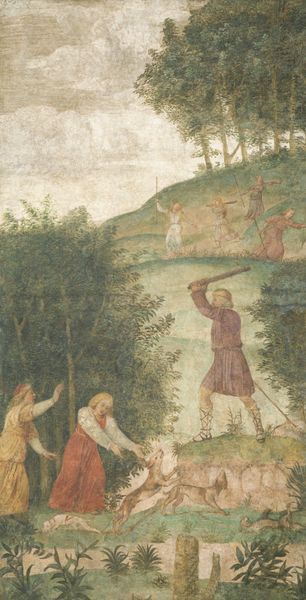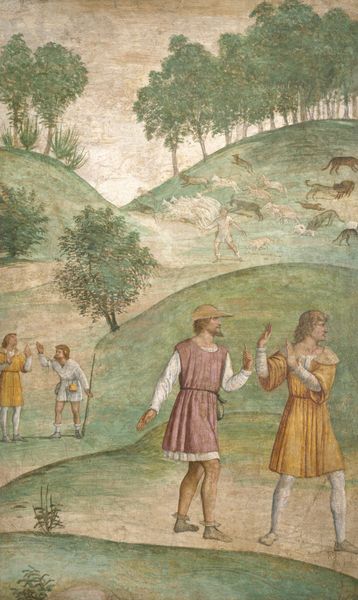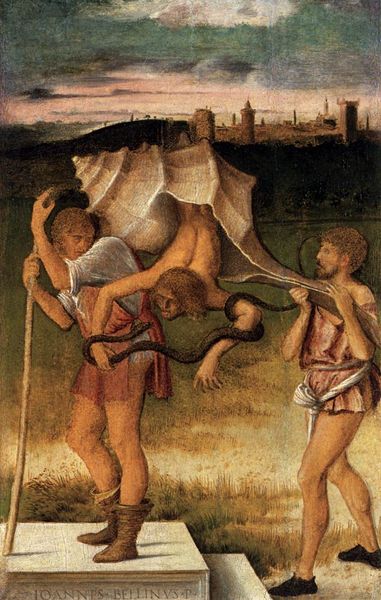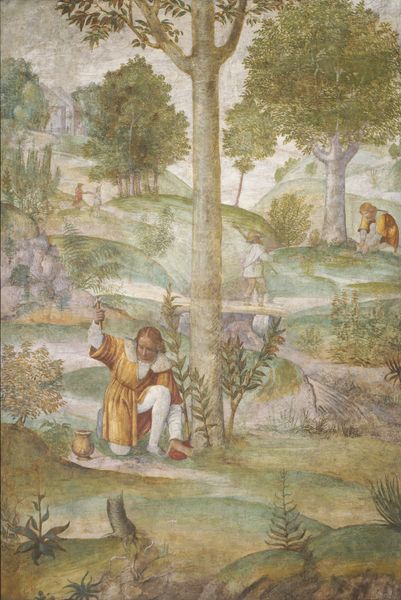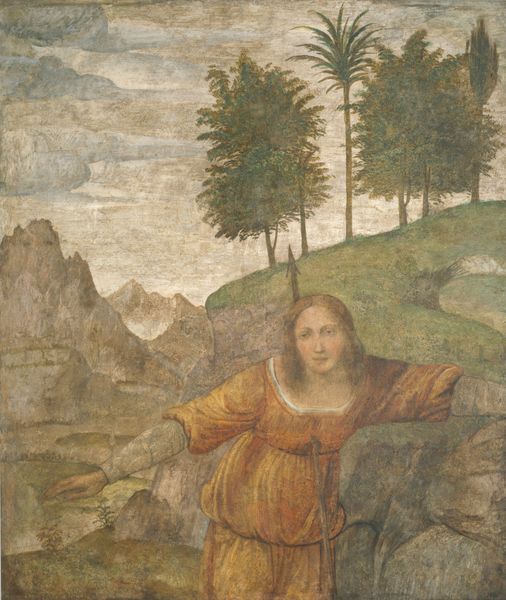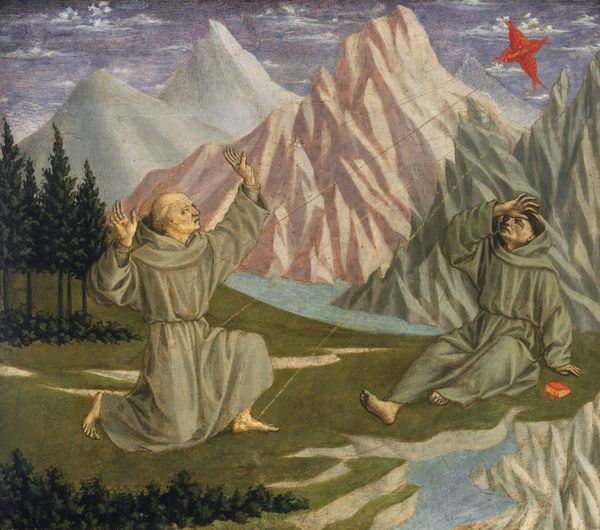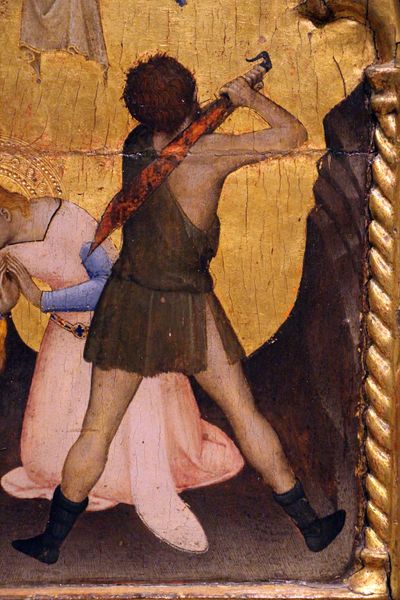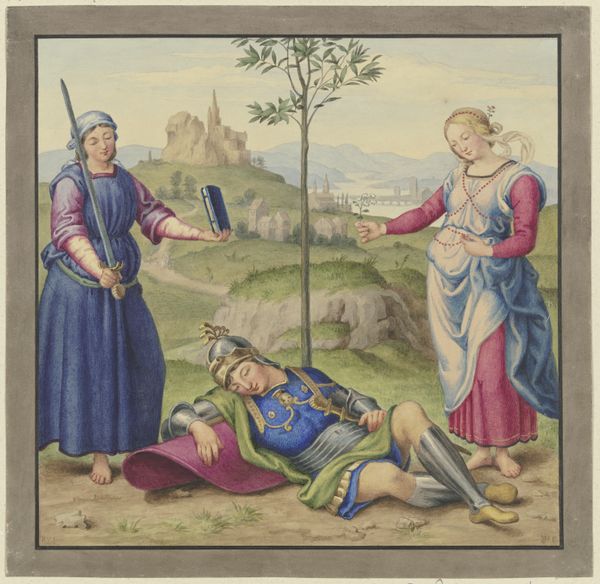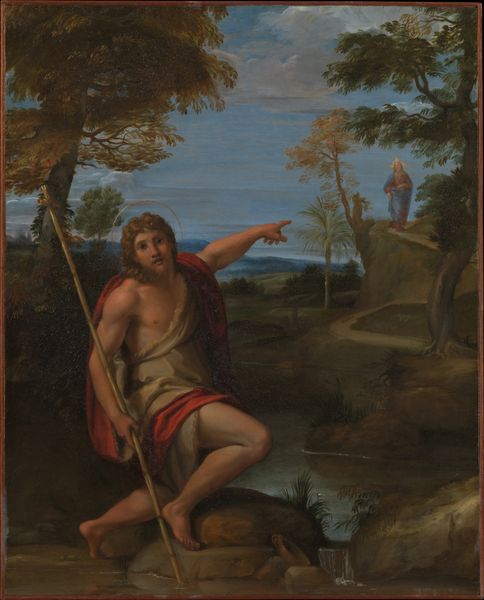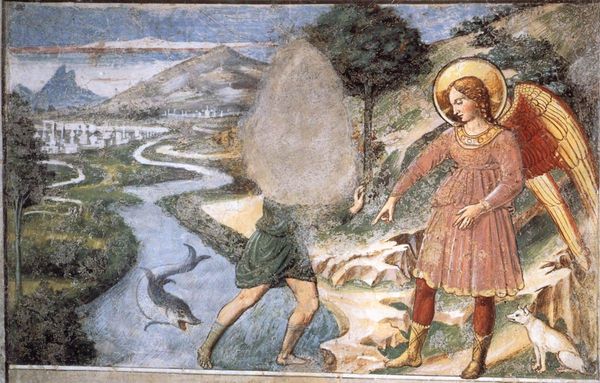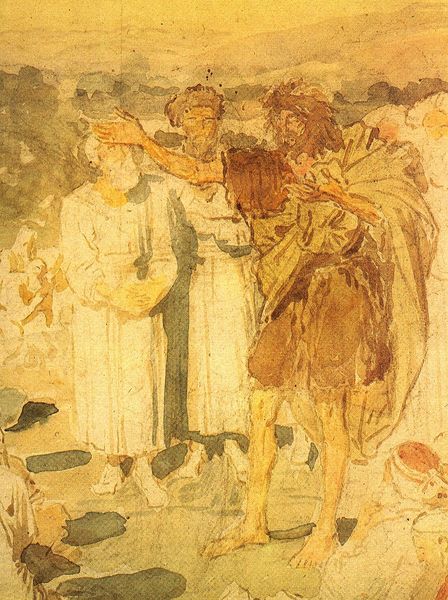
#
possibly oil pastel
#
oil painting
#
acrylic on canvas
#
coloured pencil
#
underpainting
#
painting painterly
#
watercolour bleed
#
watercolour illustration
#
watercolor
#
warm toned green
Dimensions: overall: 228 x 124.5 cm (89 3/4 x 49 in.)
Copyright: National Gallery of Art: CC0 1.0
Bernardino Luini painted "Cephalus and the Nymphs," sometime before 1532 in the Lombardy region of Northern Italy. It is a fresco transferred to canvas. Luini was working during the High Renaissance, a time when artists were influenced by classical antiquity. Here, the mythological tale of Cephalus is not merely a story, but a lens through which we can explore the dynamics of gender and power. The nymphs, often relegated to the background of classical narratives, are central here, their sensuality both celebrated and scrutinized through the male gaze. Note the male figure of Cephalus on the left, an arrow slung casually across his back, perhaps a hint towards ideas of hunting and conquest. The painting invites us to consider how women have been portrayed in art, either as passive objects of desire or as active participants in their own stories. Luini's work gives an insight into the tensions between desire, power, and representation, inviting us to reflect on the complexities of human relationships, and the often contradictory ways in which they are depicted.
Comments
No comments
Be the first to comment and join the conversation on the ultimate creative platform.
